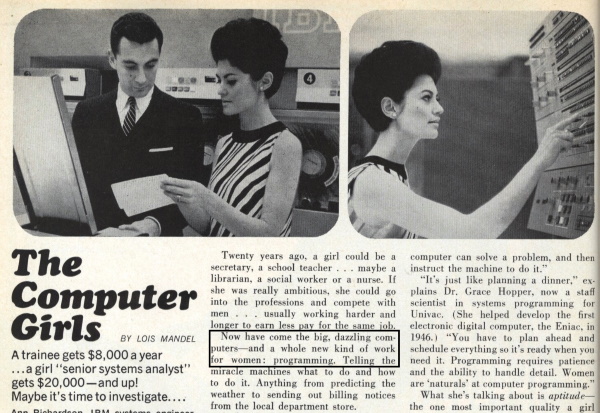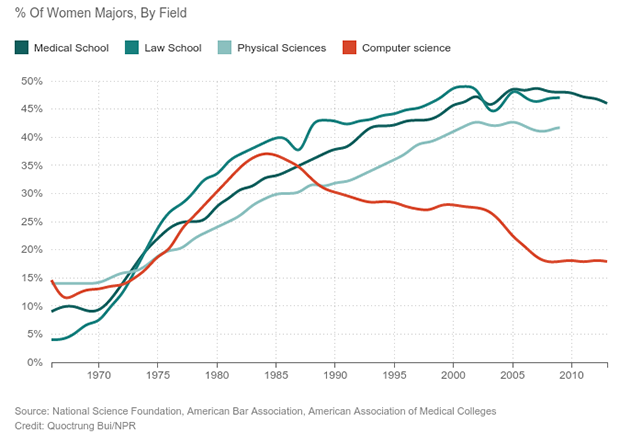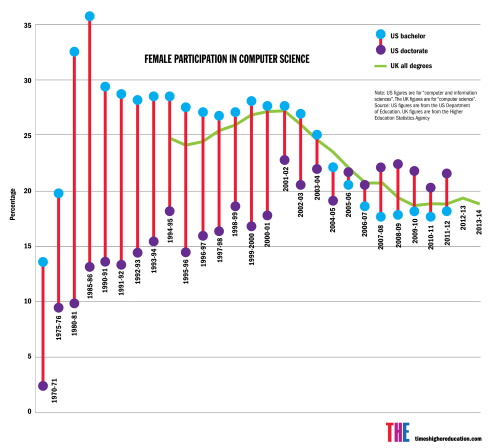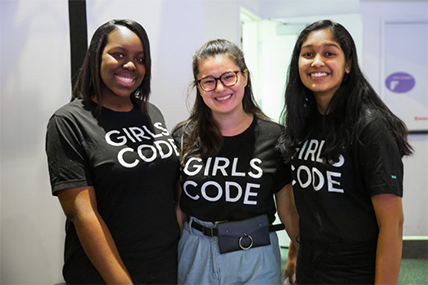

Shattering the Glass Ceiling

The ENIAC Six shattered gender barriers that previously prevented women from progressing in the computing field. They were promoted to professional status in the U.S. Civil Service in 1946, and this elevated the status of women computers. The ENIAC Six's pioneering achievements also led to a greater demand for programming and other computing positions that had higher salaries and prestige. Since the first programmers were women, this opened the doors for more women to advance in the computer industry during the 1950s and 1960s.


Excerpt from a Cosmopolitan magazine article describing opportunities for women in programming, 1967, The Computer Boys.
Long-Term Impact
Women continued to thrive in the computing industry for 40 years after the ENIAC Six broke the glass ceiling. During this period, the number of women studying computer science grew faster than the number of men.

Graph showing percentage of women majors by field during the years 1965 to 2015, National Public Radio.

Graph showing percentage of female participation in computer science from in the U.S. and UK during the years 1970 to 2014, Times Higher Education.
However, women's participation in programming started to decline in the mid-1980s as personal computers, which were mainly marketed to males, began appearing in more households. Today, groups like Girls Who Code are dedicated to closing the gender gap to continue the ENIAC Six's legacy.

Girls who participate in Girls Who Code's College Loops program, Girls Who Code.

Kode with Klossy members learning how to code, Kode with Klossy.
